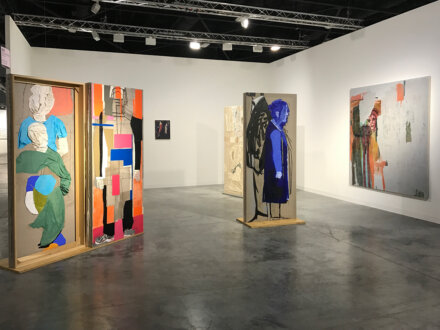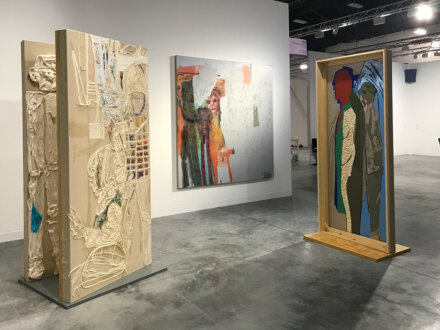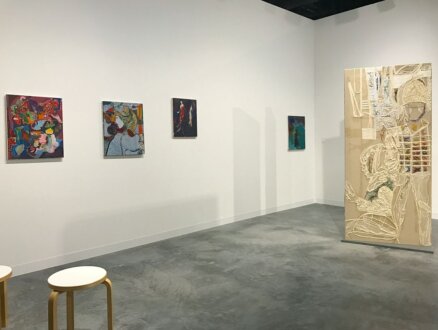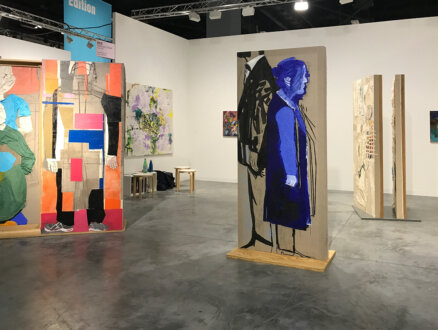Art Basel Miami Beach 2017 – Jackie Gendel, Dona Nelson (Works)
Selected Works
Jackie Gendel, Dona Nelson
Art Basel Miami Beach 2017 – Jackie Gendel, Dona Nelson Press Release
Though arrived at from different historical contexts, both Jackie Gendel and Dona Nelson’s work are characterized by a simultaneous and overlapping plurality of styles. The artists’ stylistic variety is intertwined with the diverse applications of feminism to artistic practice. Gendel’s painting project can be understood as an attempt to reclaim femininity. Groups of women are an iconic motif in her work, and are frequently seen walking arm in arm – evoking cliques, human chains, or marching Suffragettes. Where Gendel’s works can be linked to artists like Florine Stettheimer or the Cubist-spawned movements that include Sonia Delaunay, Nelson’s work evokes the second-wave feminist practices that sought equal standing with the male American painters of the 1940s and 50s.
Nelson’s career began with poured, abstract paintings in the ‘70s, after which she turned to figuration in the early ‘80s, a transition which became more materially invested over time. Widening the scope of her materials as well as processes, her work became again more abstract during the ‘90s with the artist defining herself as an image maker defying the dichotomy of figuration and abstraction. Her formal inventiveness took another turn in the early 2000s with her double-sided paintings in which she dripped and hosed paint through the canvas, allowing this process to reveal the two picture planes as fundamentally and materially interdependent. In her newly developed body, of work of which two examples will be on display, Nelson reintroduces the figure, and her way of eschewing rather than producing contradiction comes full circle.
Reviewing Nelson’s 2014 exhibition in the New York Times, Roberta Smith wrote: “Incrementally and without nearly the attention she deserves, Dona Nelson has become one of the best artists working today, partly by spending over two decades wrestling with the idea of a painting as a free-standing object with two distinct sides and, in many ways, a mind of its own.”
Unlike Nelson, Gendel did not arrive at her stylistic vocabulary over time. Stylistic variety has been present since her earliest works, perhaps influenced by being a member of the first generation with unfettered access to the limitless images of the internet. Her task then was to extract meaning and relevance, sifting through what is available and probing it for resonance and potential. Gendel embraces painting as a surface of contradiction, in which divergent styles, processes, and references circulate simultaneously, unfolding in a fluid examination of what is possible in the medium. This is reflected in the grid of smaller, framed works on paper, which will function as an index of her range of compositions, palettes, and motifs.
Our presentation will not only compare these two highly competent painters in terms of their formal approaches to the medium of painting, but will examine how their distinct generational backgrounds have influenced their respective practices.



